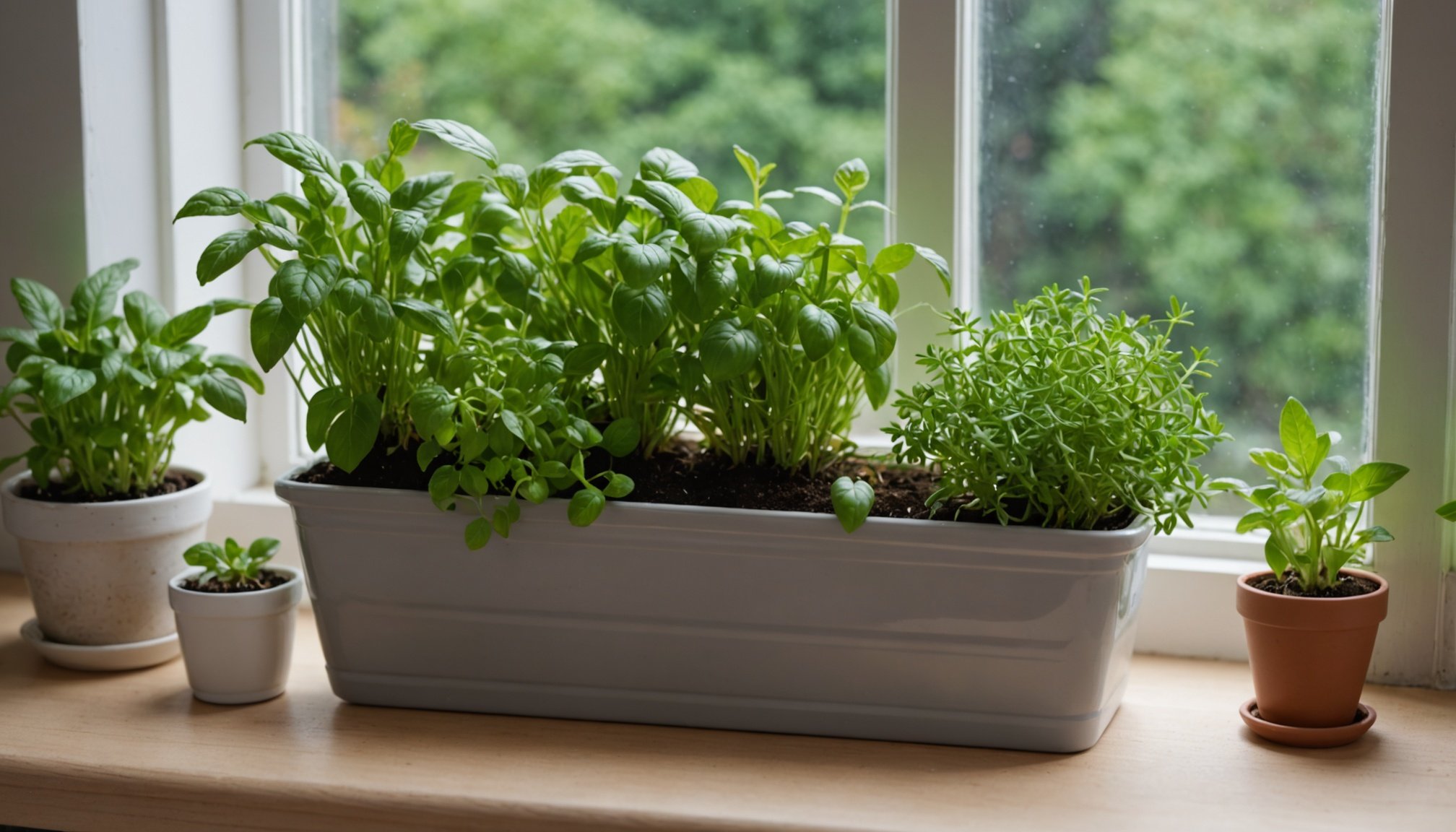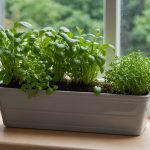Window Sill Wonders: Your Ultimate Guide to Growing a Thriving Herb Garden in Miniature Greens
Growing an herb garden on your window sill is a great way to bring a touch of nature and freshness into your home, especially if you have limited space. Whether you’re a seasoned gardener or a beginner, this guide will walk you through the steps to create and maintain a thriving indoor herb garden.
Choosing the Right Herbs for Your Garden
When it comes to selecting herbs for your window sill garden, it’s important to choose varieties that are well-suited for indoor growing and can thrive in the conditions you can provide.
In parallel : Create an easy-care kitchen: smart strategies for stress-free cleaning and maintenance
Popular Herbs for Indoor Gardens
Here are some of the best herbs to grow indoors:
- Mint: Known for its hardiness and ease of growth, mint is a great choice for beginners. However, it can be quite invasive, so consider growing it in a container to keep it under control[1].
- Basil: With its varied flavors and beautiful leaves, basil is a favorite among herb gardeners. It prefers well-draining soil and plenty of sunlight[1].
- Thyme: Thyme is another easy-to-grow herb that comes in various forms, such as ‘Silver Posie’ and ‘Doone Valley’. It is perfect for adding a touch of elegance to your window sill garden[1].
- Parsley: Parsley is a slow-growing herb that prefers partial shade and consistent moisture. It’s a great addition to any indoor herb garden[1].
- Chives: Chives are easy to grow and require minimal maintenance. They add a lovely onion flavor to dishes and can be harvested continuously[1].
Preparing the Perfect Soil and Container
The soil and container you choose are crucial for the health and success of your herb garden.
Topic to read : Creating your ideal kitchen oasis: a guide to crafting the ultimate workspace for your home-based culinary business
Selecting the Right Container
When choosing a container, make sure it is large enough to accommodate the roots of your herbs. A minimum size of 80 x 15 cm is recommended for about 5 plants. Here are some key points to consider:
- Draining Soil: Ensure your container has drainage holes to prevent root rot. You can also add a layer of broken pottery, gravel, or pouzzolane to enhance drainage[1].
- Soil Mix: Use a high-quality potting mix specifically designed for containers. If the mix seems compact, add some coarse sand to improve drainage[1].
Table: Comparison of Soil Types for Herb Gardens
| Soil Type | Characteristics | Suitability for Herbs |
|---|---|---|
| Potting Mix | Well-draining, balanced nutrients | Excellent |
| Garden Soil | May be too dense, lacks specific nutrients for containers | Fair |
| Organic Mix | Rich in organic matter, good drainage | Good |
| Compost-Based Mix | High in nutrients, but may retain too much water | Fair |
| Peat-Based Mix | Good water retention, acidic pH | Good for acid-loving herbs |
Planting and Arranging Your Herbs
Once you have your container and soil ready, it’s time to plant your herbs.
Planting Tips
- Plant in Quincunx: Arrange your herb plants in a quincunx pattern to ensure even growth and air circulation[1].
- Water Thoroughly: Water your plants abundantly after planting and during the first few weeks. Reduce watering to 2-3 times a week during hot weather[1].
- Provide Adequate Sunlight: Most herbs need plenty of sunlight. Place your window sill garden in a spot that receives at least 4-6 hours of direct sunlight per day[1].
Maintaining Your Herb Garden
Regular maintenance is key to keeping your herbs healthy and thriving.
Watering and Humidity
- Check Soil Moisture: Before watering, check if the soil is dry to the touch. Overwatering can lead to root rot, while underwatering can cause the leaves to wilt[1].
- Maintain Humidity: Herbs prefer a humid environment, but indoor spaces can be dry. You can place the container on a tray filled with water and pebbles to increase the humidity around your plants[3].
Pruning and Harvesting
- Regular Pruning: Prune your herbs regularly to encourage bushy growth and prevent them from flowering. This will also help in maintaining the shape of the plants[1].
- Harvest Leaves: Harvest leaves and stems regularly to promote new growth. For herbs like mint and basil, pinching off flower buds will help the plant focus its energy on leaf production[1].
Common Challenges and Solutions
Even with the best care, your herb garden might face some challenges.
Root Rot
- Symptoms: Yellowing leaves, soft stems, and a foul smell.
- Solution: Check for drainage issues, reduce watering, and repot the plant in fresh, well-draining soil if necessary[1].
Pests
- Symptoms: Tiny insects on the leaves or white powdery patches.
- Solution: Use neem oil or insecticidal soap to treat infestations. For powdery mildew, improve air circulation and reduce watering[3].
Using Technology to Aid Your Gardening
In today’s digital age, there are several tools and apps that can help you in your gardening journey.
Plant Parent App
- Features: This app offers smart reminders for watering, fertilizing, pruning, and repotting. It also includes a light meter to help you determine the right amount of light for your plants and a plant identification feature[3].
- Benefits: With Plant Parent, you can ensure your plants receive the right care at the right time, even if you’re a busy person. The app also provides personalized care plans and diagnostic tools for common plant diseases[3].
Creating an Apartment Garden
For those living in apartments, growing an herb garden on the window sill is a fantastic way to bring some greenery into your space.
Tips for Apartment Gardeners
- Use Vertical Space: If you have limited window sill space, consider using a vertical garden or a trellis to maximize your area[4].
- Choose Compact Varieties: Opt for compact or dwarf varieties of herbs that are specifically bred for indoor growing and small spaces[1].
- Utilize Partial Shade: If your window receives partial shade, don’t worry. Herbs like parsley and mint can thrive in such conditions[1].
Growing an herb garden on your window sill is a rewarding and easy way to add freshness and flavor to your cooking. By choosing the right herbs, preparing the perfect soil and container, and maintaining your garden with regular care, you can enjoy a thriving indoor herb garden all year round.
As Hubert Fontaine from Rustica.fr advises, “La clé pour un jardin-potager florissant est de comprendre les besoins spécifiques de chaque plante et de les adapter à votre environnement.” By following these tips and using the right tools, you’ll be well on your way to creating a window sill wonder that will delight your senses and enhance your kitchen.
So, go ahead and start growing your own herb garden today. With a little care and attention, you’ll be enjoying fresh, fragrant herbs right from your own window sill in no time. Happy gardening











